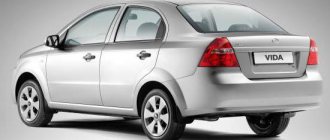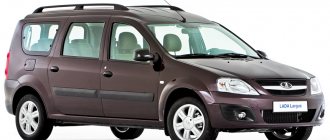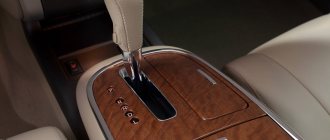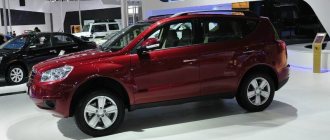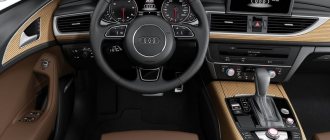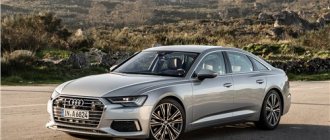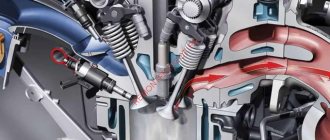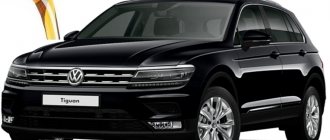Home / Articles / Test drive when buying a used car
Buying a car is a responsible and serious matter. This is especially true for a used vehicle. After you have taken into account all the nuances regarding checking documents and visually assessing the car, the important moment comes to test your future purchase in practice. Test driving a car will help you make your final decision regarding its purchase. Use our tips for checking a used car to ensure your purchase doesn't disappoint.
Before the test drive
Prepare in advance the route along which you plan to “ride” the car. Navigation programs will help you with this; choose an area that is familiar to you. Refuse the route that the seller offers you. To test all the capabilities of the car, it is better to choose a motorway or highway - here you can check the operation of the vehicle at all speeds and the operation of the steering. If someone from your circle of acquaintances is well versed in cars, then ask him to help you with selection and testing. Agree in advance with the driver about the time of the test drive. 20 minutes is enough to appreciate the whole picture, but the owner is unlikely to allow you to drive his car for longer.
Positive properties of purchasing a car from a test drive site?
There is certainly some truth in the words of experienced car owners.
Among the main advantages of purchasing cars that were used at test drive sites are the following:
Wide selection of models . Modern car dealerships allow you to experience not only expensive premium cars, but also middle-class cars.
Most often, especially for premium cars , fully equipped cars participate in test drives. This is done in order to attract the attention of potential buyers to the capabilities of the offered models, and they will already pay extra for additional options if they wish.
It is also worth noting that the cars selected for test drive sites are of the highest quality. Occasional models that have problems with the engine or gearbox will not be allowed to test drive. The model must appear before the potential buyer in all its glory, which is why test drive models are in excellent technical condition.
Also, car dealership employees often conduct technical inspections of test-drive vehicles.
And most importantly, most often cars that were used in test drives by car dealerships are not used for a long time.
Thus, it can be argued that cars that have been participating in test drives at car dealerships for some time actually have a fair number of advantages, and experienced motorists are right in advising the purchase of such cars.
What should you pay attention to?
- How the car accelerates.
If the vehicle accelerates with jerks and dips, this indicates a problem with the power supply or ignition system. Also be wary of extraneous noises or knocks. The car should pick up speed smoothly, especially for models with an automatic transmission.
- How speeds are changed in a gearbox:
- a crunch indicates a breakdown in the clutch drive;
- a loose lever indicates wear on the gear shift mechanism or a broken linkage bushing;
- pay attention to the clutch - it should not make sounds.
- How does a vehicle behave on a smooth road?
If the car skids on a flat highway, this indicates an incorrect alignment of the wheel angles. Check the brake system by applying the brakes lightly. If there are no extraneous sounds, the brakes operate smoothly, then everything is in order with their operation.
- How does ABS work?
It is better to check the anti-lock braking system on a primer or on wet asphalt. To test ABS, press the brake pedal sharply: if the system is activated, the car will continue to steer straight, but a tremor will be felt in the brake pedal.
At the end
Once stopped, open the hood and check if all components are working correctly. Let's pay attention to all the sounds, liquids and smoke. The check can be repeated with the engine switched off - for example, you can check if any plastic parts are broken.
On a note! Please remember that a test drive does not obligate us to make an immediate decision to purchase the vehicle. For us, this is food for thought, which is preceded by an exchange of views with the companions of our trip.
What else to pay attention to during a test drive:
- does the steering wheel pull to the side, is vibration felt in it;
- is there any play in the steering;
- what is the view from the driver’s seat – what are the blind spots, is there anything blocking visibility;
- how the steering reacts to sharp turns.
Discuss with the seller the possibility of testing the vehicle for potholes. On an uneven road, you can see how the suspension behaves; the car should not bounce on small potholes. After the test drive, do not rush to tell the seller your decision. Perhaps the car should be taken to a competent mechanic. Ask the owner for time to make a decision. If during testing of the machine you identify problems, but still intend to buy it, discuss the possibility of reducing the price.
All articles
Is it worth buying
Selling cars from a test drive has both pros and cons for the buyer and seller. This article is intended for car enthusiasts, so we will focus specifically on the advantages and disadvantages of purchasing such a vehicle from their point of view.
Buying a car after running it in has a number of undeniable advantages:
- Discount. Cars are sold at a reduced price, which can reach 70% of the price of a similar car that was not tested.
- The vehicle is fully equipped with various options. The car is equipped with an alarm and a second set of tires will be provided to the buyer.
- The car is legally clean, so there should be no problems with it.
- Guarantee. Since in most cases the car is used for a test drive for no longer than six months, it is covered by the manufacturer’s warranty.
When purchasing such a car, it is worth remembering the disadvantages of the deal:
- The car was tested, and this could not have the best effect on its technical condition, because driving style varies from driver to driver, and everyone probably tried to test the vehicle’s capabilities to the maximum. In addition, it already has mileage, and not a small one: after all, the car could be used not only for tests, but also by company employees for official purposes; but it will be several times less than that of a used car.
- Legally, the buyer will be the second owner, the first owner is the dealer.
- To save money, company employees could use relatively inexpensive automotive fluids, as well as fill in the cheapest fuel.
How to buy
Buying a car always requires a responsible approach, and our case is no exception. Care is the key to a good purchase. Do not neglect this rule when inspecting the car: if something does not suit you in the car or something raises doubts, do not hesitate to ask questions to the manager.
In order to buy a car after a test drive, you need to do the following:
- Carry out a thorough visual inspection for damage or scratches on the vehicle body. Ask the salon staff for a device to check the paint application on the car. Try opening and closing the doors, trunk, hood several times - everything should work without problems.
- Ask the manager for the account book: it was required to record all the repair work that the car underwent.
- It is advisable to take a familiar car mechanic or car mechanic with you. It is easier for a specialist to recognize faults.
- Don't limit yourself to just one dealer. Look at offers at other car dealerships. Compare, as far as possible, prices, equipment, and condition of the car.
Guided by these rules, you will certainly be able to choose the most profitable option that will meet all your requirements.
For another way to save money when buying a car, check out the article “Where to Buy a Used Car.”
Disadvantages of purchasing a test drive car
But in addition to the large number of positive aspects of purchasing a car that was used on the test drive site, there are also obvious disadvantages:
In theory, test drive cars are one hundred percent equipped so that the product can be shown at its best to a potential client. But when a car dealership sells a car, many functions instantly evaporate - the air conditioning and smart car devices are simply removed from the car. It’s not even uncommon for brand new parts to be replaced with used ones.
Often test drive cars are registered to someone else for use , since it is legally impossible to travel outside the car dealership without license plates. But difficulties may arise when re-issuing documents; this should not be forgotten.
Another disadvantage is the almost complete impossibility of getting a discount when purchasing . Sellers often cheat by pointing out that the car was used for test drives, which means the car is a used car. But the prices are not lowered, pointing to the supposedly complete equipment of the car and other “goodies” of the test drive car.
Thus, whether to buy a test drive car or not is the choice of each person. The main thing to remember is that the cars used in test drives have not only positive properties.
Nuances
Purchasing a car that was used for a test drive has its own characteristics that need to be taken into account:
- the car will not be new, the salon used it to demonstrate it to customers, provided it for use to evaluate the model;
- there may be small scratches, abrasions, etc.;
- the car will have mileage, although not significant;
- It is recommended to assess the condition of the vehicle with a specialist.
In general, the deal is concluded in a general manner, however, the text of the agreement must be studied carefully. It is important that it indicates all the capabilities and disadvantages of the machine.
Now one of the popular types of buying a car is purchasing a car from a car dealership, which was a test sample. Many are attracted by the significantly reduced price compared to a new car. This clouds people's minds and they think that they have purchased an almost new car at a good discount. But this is a deep misconception, because... in most cases, a test drive car is very far from new.
Personally, I do not approve of buying a car from a test drive and I want to highlight 2 main reasons for this:
- Firstly, when you buy a car from a test drive, you will no longer be the first owner - after all, in order to get on the road, the test car has to be registered with the traffic police, so your name will only be in second place on the title. Those. you will be the second owner. It’s not such a significant minus, but when selling it later, it sometimes has an impact - after all, a car from a single owner sounds more attractive.
- Well, now the most important thing is that in most cases, test drive cars are not spared in any way, so each kilometer traveled on a test drive can be counted as 3-4 km traveled in normal use. You should be especially careful if you have chosen a test car that is very popular (for example, budget Rio or Solaris) - such cars are used in tests every day. Those. You need to understand that different drivers with their own individual driving styles get into the test car every day - some like to “fry” on the road, while others don’t really know how to drive at all. And the test car has to withstand all this. Here everything still depends on the managers - some control potential buyers, while others are afraid of scaring them away and allow them to “torment” the car. Those. When used in this way, test cars do not undergo any normal engine and gearbox running-in. In addition, test cars are often used for personal and work purposes by car dealership employees - so the mileage accumulates quite a bit. And no one canceled the various chips, abrasions, cracks - i.e. everything is the same as any used car.
It turns out that the main reason against buying here is that such cars are not spared at all. And it turns out that a test car from a car dealership with 15 thousand miles may be in worse condition than an ordinary used car from one owner with 30-40 thousand miles.
Is it possible to return a car purchased to the dealership after a test drive?
When purchasing such a car, you should carefully read the contract so as not to encounter problems in the future. As a rule, each car dealer gives a certain warranty period during which you can return the car back if there are significant claims against it. Today, many showrooms work not only with new, but also with used vehicles, and accordingly, they successfully sell both of them, having the necessary paperwork for each case.
It is worth noting that after testing, cars are sold as used ones, through appropriate contracts. And they can be returned within 15 calendar days, these are the rules according to the Consumer Rights Protection Law. To resolve the issue painlessly, you must first look at the document, which should mention and describe this point in detail. And it should not contradict existing legislation.
Thus, according to Article 18 of this Law, there is the possibility of return if defects are detected. Considering that the car has already been in use, it may obviously have these. Therefore, in such situations we are talking about those problems that were not noted and discussed during the transaction. And according to Art. 10-19, in case of serious defects, you can return it during the warranty period. In addition, this becomes real if warranty repairs are refused or not performed within the agreed period. The need for repeated restoration, due to which at least a month of downtime was recorded for a year (in total), also leads to a similar outcome.
As long as the warranty period remains valid, the car can be returned, like any other product. However, after this period, returns become impossible and complaints become irrelevant. So everything needs to be done in due time.
In addition, it is worth keeping in mind that the car dealership has the ability to correct minor defects and problems with the car. That is, if the problems discovered by the buyer during the same 15-day period are not global in nature, you can demand that the seller fix them, and this will be done.
Once again, it is worth noting the importance of applying on time, since missed deadlines may cause this opportunity to be lost forever. This chance is provided by the Law on the Protection of Consumer Rights, in accordance with Art. 18, is also usually supported by the car dealer's and manufacturer's warranties.
Pros and cons of buying a car after a test drive
Sometimes practically new cars appear on sale, and at a good price, cheaper than similar options. This is, of course, a tempting offer, but only the car for sale was used in a showroom for a test drive. Is it worth buying this or avoiding this option?
This is actually a difficult question. The purchase can turn out to be either very profitable or very unpleasant.
Therefore, we will consider what bonuses the buyer of such a car can expect, and what troubles he may encounter. And, of course, how to avoid these troubles.
